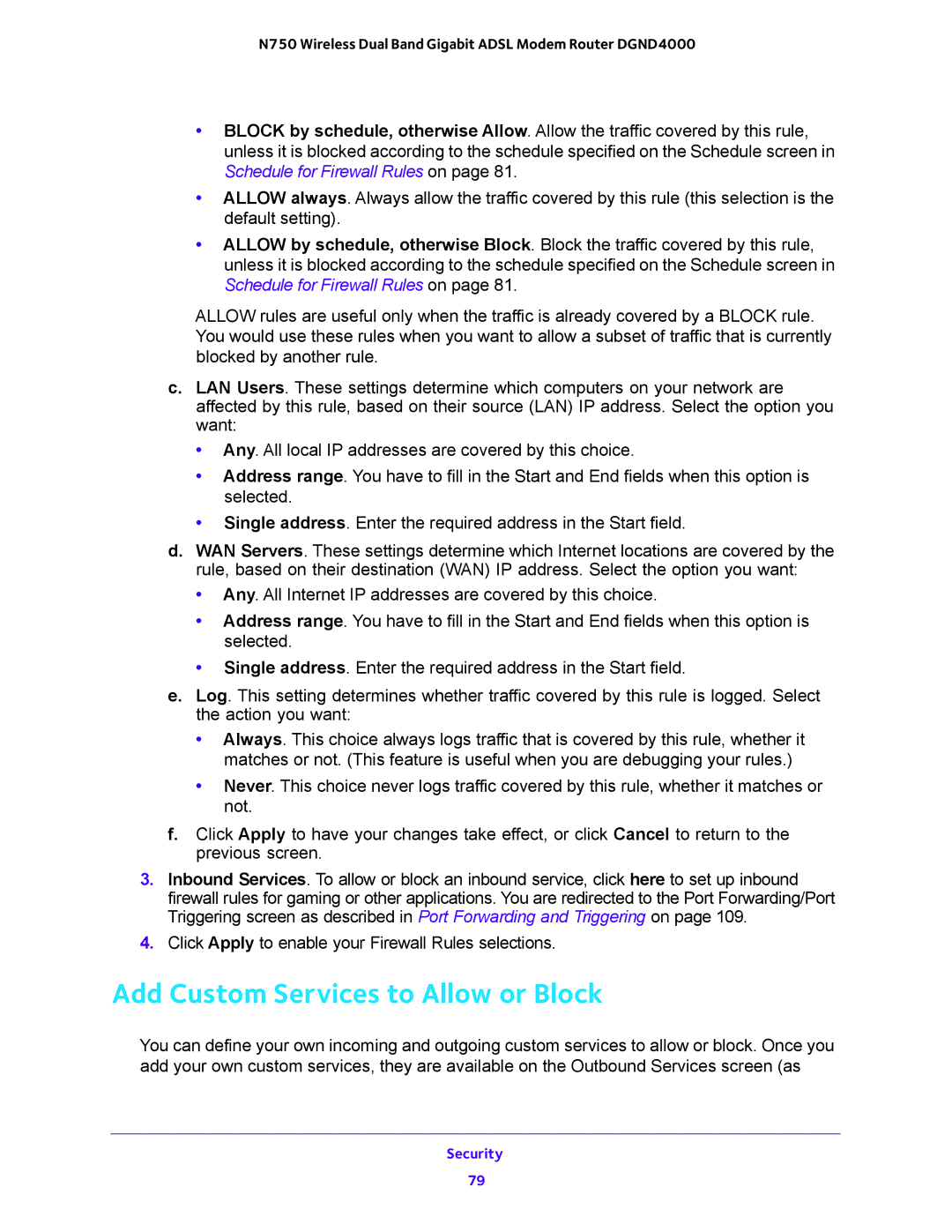N750 Wireless Dual Band Gigabit ADSL Modem Router DGND4000
•BLOCK by schedule, otherwise Allow. Allow the traffic covered by this rule, unless it is blocked according to the schedule specified on the Schedule screen in Schedule for Firewall Rules on page 81.
•ALLOW always. Always allow the traffic covered by this rule (this selection is the default setting).
•ALLOW by schedule, otherwise Block. Block the traffic covered by this rule, unless it is blocked according to the schedule specified on the Schedule screen in Schedule for Firewall Rules on page 81.
ALLOW rules are useful only when the traffic is already covered by a BLOCK rule. You would use these rules when you want to allow a subset of traffic that is currently blocked by another rule.
c.LAN Users. These settings determine which computers on your network are affected by this rule, based on their source (LAN) IP address. Select the option you want:
•Any. All local IP addresses are covered by this choice.
•Address range. You have to fill in the Start and End fields when this option is selected.
•Single address. Enter the required address in the Start field.
d.WAN Servers. These settings determine which Internet locations are covered by the rule, based on their destination (WAN) IP address. Select the option you want:
•Any. All Internet IP addresses are covered by this choice.
•Address range. You have to fill in the Start and End fields when this option is selected.
•Single address. Enter the required address in the Start field.
e.Log. This setting determines whether traffic covered by this rule is logged. Select the action you want:
•Always. This choice always logs traffic that is covered by this rule, whether it matches or not. (This feature is useful when you are debugging your rules.)
•Never. This choice never logs traffic covered by this rule, whether it matches or not.
f.Click Apply to have your changes take effect, or click Cancel to return to the previous screen.
3.Inbound Services. To allow or block an inbound service, click here to set up inbound firewall rules for gaming or other applications. You are redirected to the Port Forwarding/Port Triggering screen as described in Port Forwarding and Triggering on page 109.
4.Click Apply to enable your Firewall Rules selections.
Add Custom Services to Allow or Block
You can define your own incoming and outgoing custom services to allow or block. Once you add your own custom services, they are available on the Outbound Services screen (as
Security
79
